How to extract profits out of a company
Tax-efficient advice for limited company directors.
Believe it or not, there are more than 4.7 million limited companies registered in the UK, including the 810,316 incorporations that signed up in 2020/21.
Only around 2m are actively trading, but the number of new companies formed during the previous tax year was a 22% year-on-year increase.
Unsurprisingly, that percentage represented the highest number of incorporations on record.
Surprisingly, this record high was reached during COVID-19.
As well as starting a company in the middle of a pandemic, company directors also need to work out the most tax-efficient ways to pay themselves.
Once you’ve set up an incorporated business and become a director, you have to be smart about how you extract profit to avoid paying more tax than you need to.
There are three main routes for a director to extract profits from their own limited company – salary, dividends and pension contributions. Usually, combining these three methods is the most tax- efficient approach to minimise your tax bill.
With corporation tax applying (at 19% in 2021/22) on any of your company’s taxable profits from its accounting period, the money you take out of the profits to pay yourself can potentially reduce your company’s corporation tax liability.
Pay yourself a small salary
When running a limited company, it might be easy to overlook that your business’s money doesn’t go straight into your personal bank account.
So, to get it into your pockets, consider paying yourself a basic salary.
This is usually set just below certain thresholds for National Insurance contributions (NICs) with the aim of enjoying the benefits of paying NIC without actually suffering any.
If, for example, you pay yourself more than the lower-earning limit (£6,240 in 2021/22), you will accrue qualifying years towards your state pension.
While that’s a positive, paying yourself more than the Class 1 NICs secondary threshold (£8,840) would be a negative.
Your company will become liable for employers’ NICs at a rate of 13.8% on any earnings above that.
If you pay yourself a penny less than £8,840 in 2021/22, your company avoids paying this jobs tax altogether.
The next payroll consideration is the personal allowance (£12,570 in 2021/22). The basic rate of income tax doesn’t apply until you exceed this threshold.
One other pertinent point to consider is that any salary you pay yourself will be treated as a business expense, which means it will reduce your taxable profit and lower the amount of corporation tax your company has to pay.
Taking dividends
Dividends are paid to an incorporated company’s shareholders out of post-corporation tax profits.
Usually, a director will be one of those shareholders and quite often the sole shareholder.
Many directors pay themselves in a combination of salary and dividends.
As dividends are drawn from profit, you need to show you have profit reserves available before issuing dividends.
If you cannot demonstrate that, HMRC could reclassify your dividends as salary and you would almost certainly need to pay income tax and NICs on that.
Dividends are a different form of taxable income, and they are treated slightly differently in comparison to salary.
The same income tax bands apply, but different dividend tax rates are
associated with them.
The best way to illustrate how dividends are taxed is through an example.
Let’s say you’re the sole shareholder, your company has made post-tax profits of £29,570, and your accounting period runs parallel to the tax year.
You take £8,000 as salary in 2021/22 and £29,570 in dividends, £37,750 in total.
The £2,000 dividend allowance makes £27,570 of your dividend potentially taxable, while what’s left (£35,570) will exceed the personal allowance (£12,570).
Once the personal allowance is deducted, £23,000 of your dividends will be taxable at 7.5%. You will fall into the basic-rate income tax band.
This would leave you with a tax bill of £1,725, with the dividend being taxed as the top slice of income.
Pension contributions
The single most tax-efficient way to extract profits from your company, but not the most practical, is to make employer contributions towards your pension pot.
These will reduce the company’s liability to corporation tax and they are not subject to NICs, although this does involve taking money out of the company for future use.
You can potentially put up to £40,000 gross into your pension pot over the course of the tax year with no tax due.
If you haven’t used any of your annual pension allowance over the last three tax
years, you might be able to carry over any unused annual allowance from those years.
The total amount you can save without incurring charges into your pension pot is currently capped at £1,073,100, due to what’s known as the ‘lifetime limit’.
Assuming you stay under these thresholds, when the time comes to take your pension benefits – currently after the age of 55, but rising to 57 from April 2028 – 25% is normally tax-free.
The rest of your retirement income that exceeds the personal allowance will be taxed at your marginal rate of income tax under the existing rules.
However you go about extracting profits from your incorporated business, getting personal tax planning advice will always help you pay the least amount of tax legally possible.
Other tax-efficient tips
The main rate of UK corporation tax applies at 19% on your company’s profits, so the goal is to reduce those profits as much as you can before being assessed.
The easiest way to reduce your company’s corporation tax bill is to claim every business expense you’re entitled to.
The general rule is these must be “wholly and exclusively” used for business
purposes, though.
From stationery and phone bills to computer software and travel costs, there’s a long list of business expenses which you might be eligible for.
You can claim for expenses with a dual purpose for business and personal use in certain circumstances as well.
The golden rule is to keep accurate records of these expenses if you want to claim tax relief on those costs to reduce your company’s year-end profits.
Taking advantage of the annual investment allowance is also a wise idea.
This is currently set at £1m until 31 March 2023.
This allowance lets your company deduct investments in plant and machinery –
such as certain commercial vehicles, machinery and office equipment – from taxable profit in full.
For example, if your company has profits of £500,000 and you spent £250,000 on plant and machinery before 31 March 2023, the full amount can be deducted from your profits.
This means only the £250,000 left would potentially be liable for corporation tax.
Finally, if you’re in a position to pay your corporation tax bill early without harming the company’s cashflow, HMRC will pay you interest.
You have nine months and one day after your company’s year-end to settle your corporation tax liability.
But if you pay your tax six months and 13 days after the start of your accounting period, the tax authority will pay ‘credit interest’ back at 0.5% from the date you paid until it was due.
For example, your company’s accounting period runs alongside the tax year from 6 April 2021 to 5 April 2022.
You can make an early payment any time between 19 October 2021 and 6 January 2023 and earn interest.
This interest would need to be included in your company accounts as it is taxable.
Bear in mind that the UK’s main rate of corporation tax will increase from 19% to 25% from 1 April 2023, so getting used to extracting profits now will be time well spent.
Speak to us for corporate tax planning advice.





